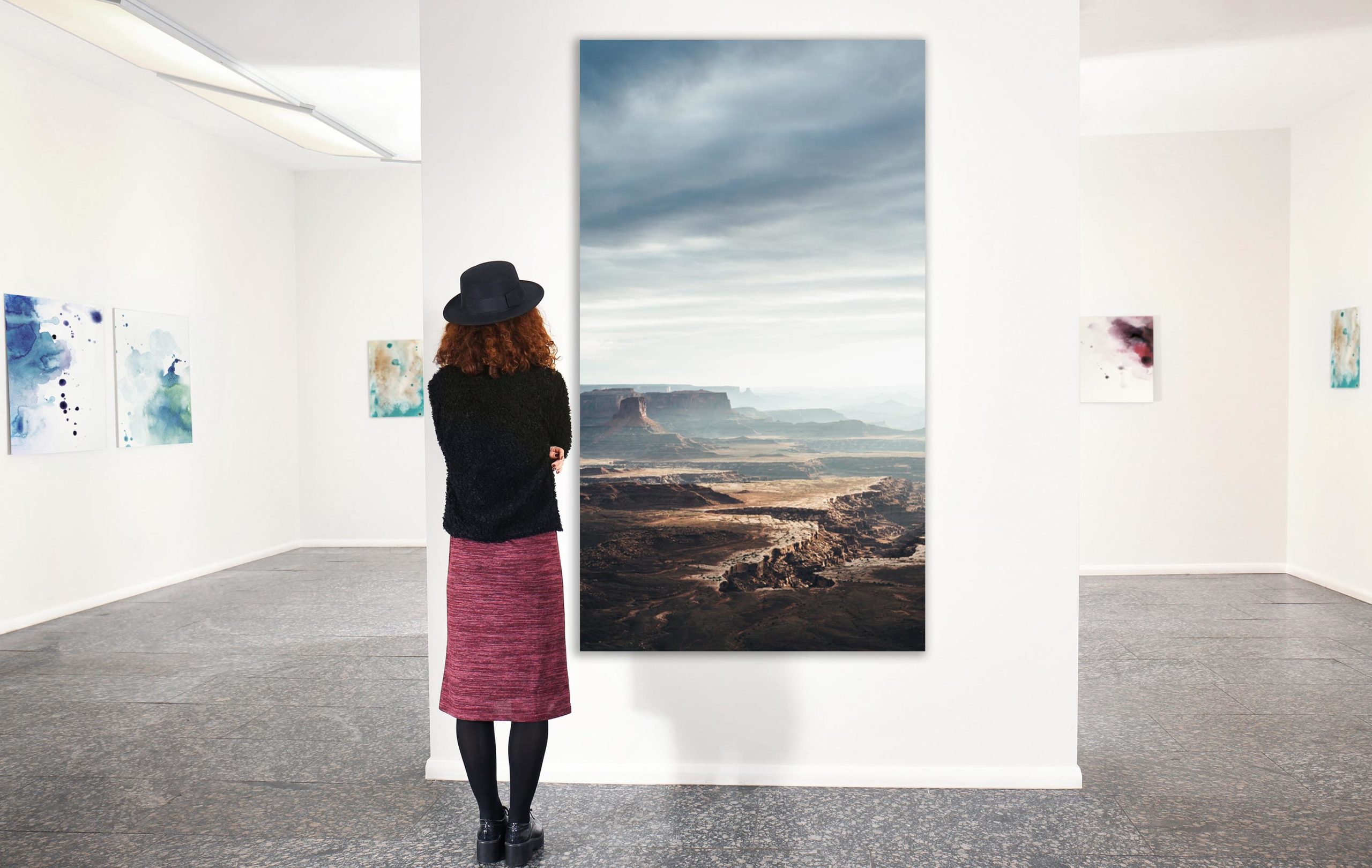
Updated: 04/1/2024
by Ashley Garner
Studio Assistant, Tribeca Printworks
There are two preliminary things to know when learning how to make prints. First is the difference between prints and originals. The second is the benefits of selling prints instead of originals.
There are various types of art prints, each with unique qualities. The most important thing is selecting the option that helps brings the best out of your creativity.
Originals vs. Prints
Making art prints differs from creating an original copy, although they may look similar.
What Are Originals?
As the name suggests, originals are authentic or actual pieces. They are not a copy or a replication of anything. There is no other photograph, drawing or painting out there. Although the artist may create them in multiples, each piece is considered a separate work. The authenticity attached to these pieces makes them more valuable. They hold a higher monetary value and are usually purchased with investment and profit in mind. Originals are often purchased by individuals, art collectors, galleries and museums.
What Are Prints?
Prints are copies of an original piece produced on a large scale. They are a budget-friendly alternative to owning a piece of original work. In other words, prints are a reproduction of a piece of artwork.
Making prints of artwork allows you to replicate your pieces so that more people can enjoy your art without putting too much strain on you to continue producing original work. Prints are relatively more affordable and available in larger quantities. We’ll talk more about the benefits of making an art print of your work in the next section.
Why You Should Make Prints of Your Art to Sell
Selling prints is vital for the following reasons:
- Allows you to keep the original: Letting go of original work can be challenging — almost every artist can relate. When you put your mind, soul and time into a piece, it isn’t easy to part with it. Making prints allows you to keep your original work while sharing its likeness with others.
- Makes the piece more accessible: Original artwork comes in limited quantities for many reasons. Besides demanding a lot of effort and time, producing art in smaller quantities increases its value. Prints offer a convenient and affordable solution to increase your piece’s accessibility without decreasing its value.
- Offers affordable alternatives to magical arts: Most people would love to own original paintings or pieces of art but cannot afford them. Their scarcity increases the demand and value. Prints allow your customers to afford a range of art pieces without breaking the bank.
- Builds your exposure as an artist: Selling original artwork can be challenging because of the price factor, which may prevent more people from experiencing your talent. Additionally, the limited quantity of originals directly affects accessibility and exposure, especially for emerging artists and photographers. Making prints of artwork enables you to share your talents with the world and allows your customers to own a piece of your work.
- Creates a passive income: How much you earn from original artwork is limited by the number of pieces you can create within a specific timeframe and how much people are willing to pay. You must either produce more to boost your income or peg the few at a high valuation. Marking art prints is a smart way to increase your sales for years, perhaps until you get the best price for your originals if you’re willing to release them.
Common Types of Art Prints
There are many ways to make prints of your art, including the following:
- Fine art giclee: The printing style involves a combination of high-quality materials, printers and inks to produce an unmatched range of color, detail and depth. The printing is done using archival ink on high-resolution digital inkjet printers on museum-quality archival surfaces. Fine art prints are the industry standard for art reproductions and photography because they offer superior quality.
- Canvas giclee: The technique involves printing artwork or photos directly onto actual canvas — it looks and feels as good as it sounds. They are perfect for various prints, including pet portraits and natural landscapes. Stretched canvas giclee offers a lightweight, economical and ready-to-hang alternative to traditionally framed art and photography at premium quality.
- HD aluminum: The process allows you to print permanent, long-lasting images on aluminum surfaces. The images are vibrant and detailed and are capable of withstanding impacts and harsh conditions. HD aluminum metal prints are available in a wide selection of sizes from 5×7 inches to 40×60 inches.
Glossy or Matte Art Prints
Glossy and matte art prints are the two most attractive finishes you can get on the market. But what are they, and when should you select one over the other?
Glossy Art Prints
Glossy surfaces offer a more traditional look to your images. They are inherently shiny but can be enhanced or toned down depending on your preference. Glossy art prints are commonly used for photographic prints.
Matte Art Prints
Unlike glossy art prints, matte finishes are non-reflective. The finishes can be smooth or heavily textured. Years ago, matte art prints would be described as dull and undetailed. However, matte art prints have become preferred, especially when mimicking your original prints.
Printing Your Art At Home
Making prints of art at home gives you control over the process and can be straightforward with the right equipment, materials and settings. Due to the expense involved, purchasing the gadgets and materials is advisable if making art prints is a long-term plan. Otherwise, you can leverage experts to help you generate the best product.
There are two essential things to consider if you want to print your art at home. The first is printers — not the regular office kind. You need a large format, high-resolution printer capable of taking pigment-based inks rather than standard inkjet printers that rely on dye-based solutions.
The second thing you need is a surface. The available archival paper options include canvas, specialist printing paper and watercolor paper. You must also consider the maximum grams per square meter (GSM) — indicating the paper’s weight and thickness — that your home printer allows. A fairly sturdy paper between 200 and 300 GSM is appropriate for art prints. It all depends on budget capabilities and printer.
Why You Should Choose Tribeca Printworks
As an artist, you want your artwork to be among the best. Whether you’re making fine art prints, canvas, acrylic face mounts or HD aluminum metal prints, you should ensure that your piece is clean, detailed and durable. Because the piece is an extension of your imagination, it’s vital to ensure that it communicates your message perfectly.
Tribeca Printworks partners with artists, designers and photographers to transform their imagination into reality. Our team of dedicated professionals with over 40 years of cumulative professional digital printing and art industry experience is ready to help you reach your goals. Get in touch with us to learn more!
What Is Giclee?
So, why giclee you may be asking? As a starting point, the word itself is pronounced “gee clay,” and while the word is French in origin, it’s use in the world of fine art printing is definitely an American construct. Loosely translated, it means “to spray.”…READ MORE
 by Michael McCarty 04/14/2020
by Michael McCarty 04/14/2020
How Should I Frame My Photos and Artwork?
What is the best way to frame my photos and artwork? Framing your art and photography can transform a space and transform your work. The process can seem daunting and the possibilities endless, but we’re here to help simplify and shed some light…READ MORE

